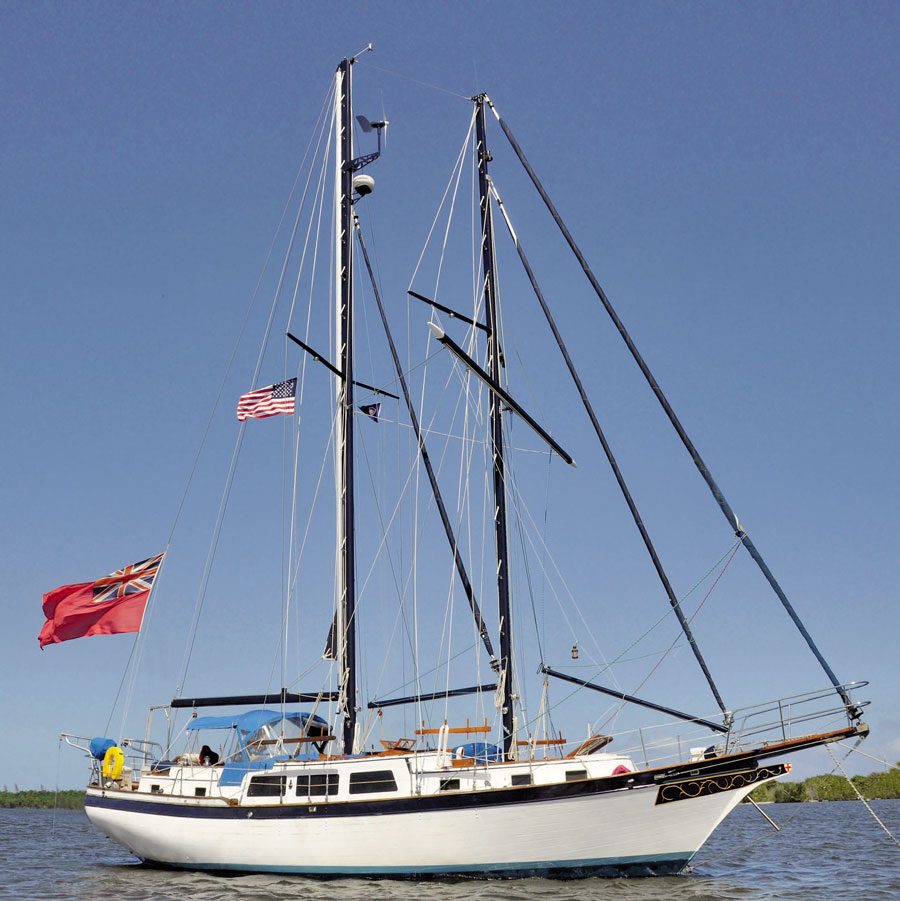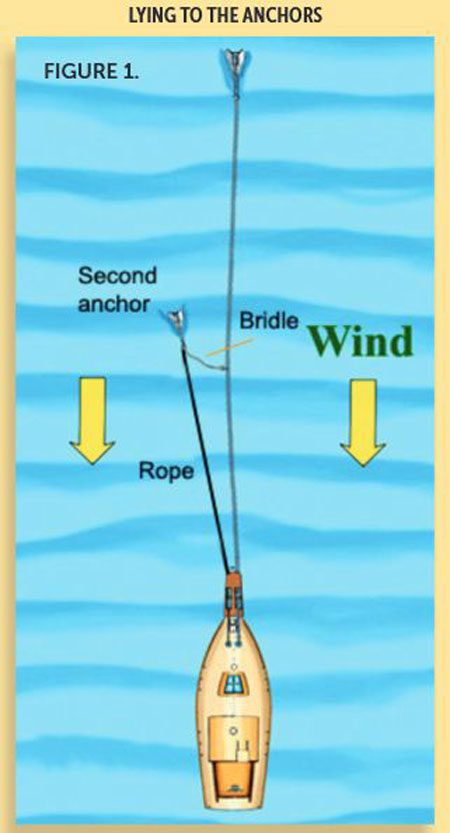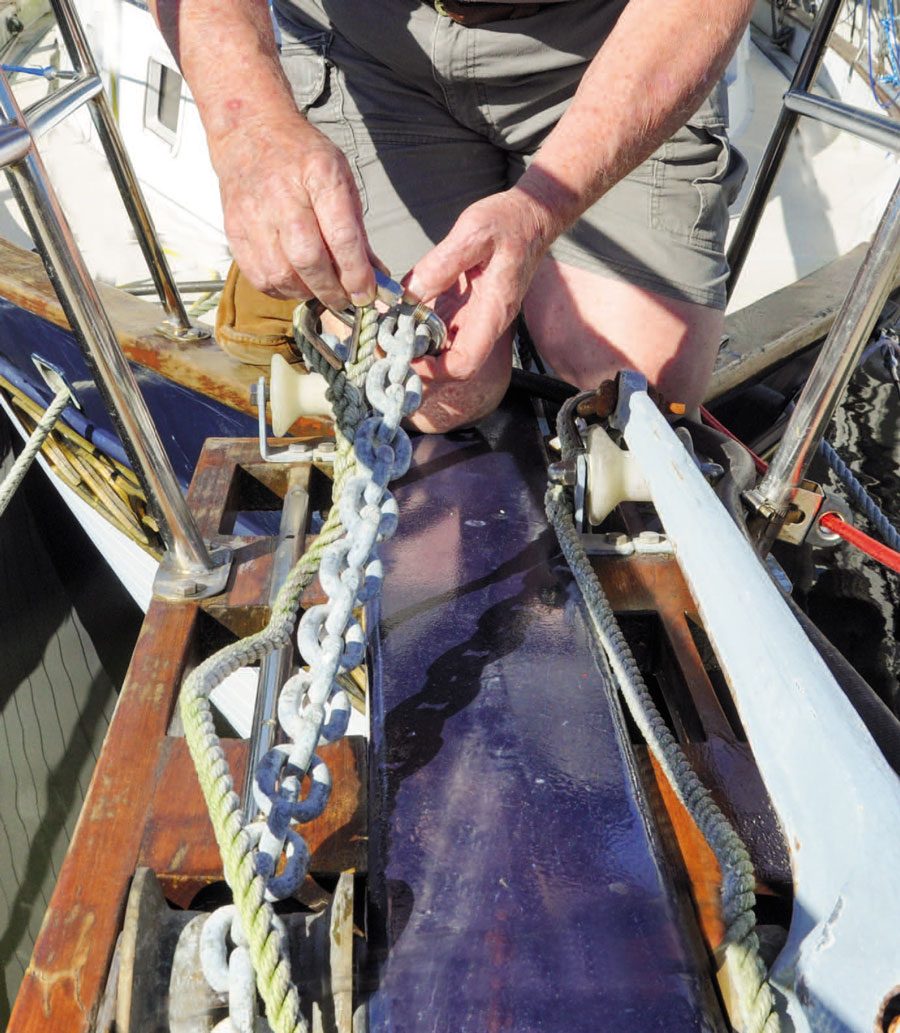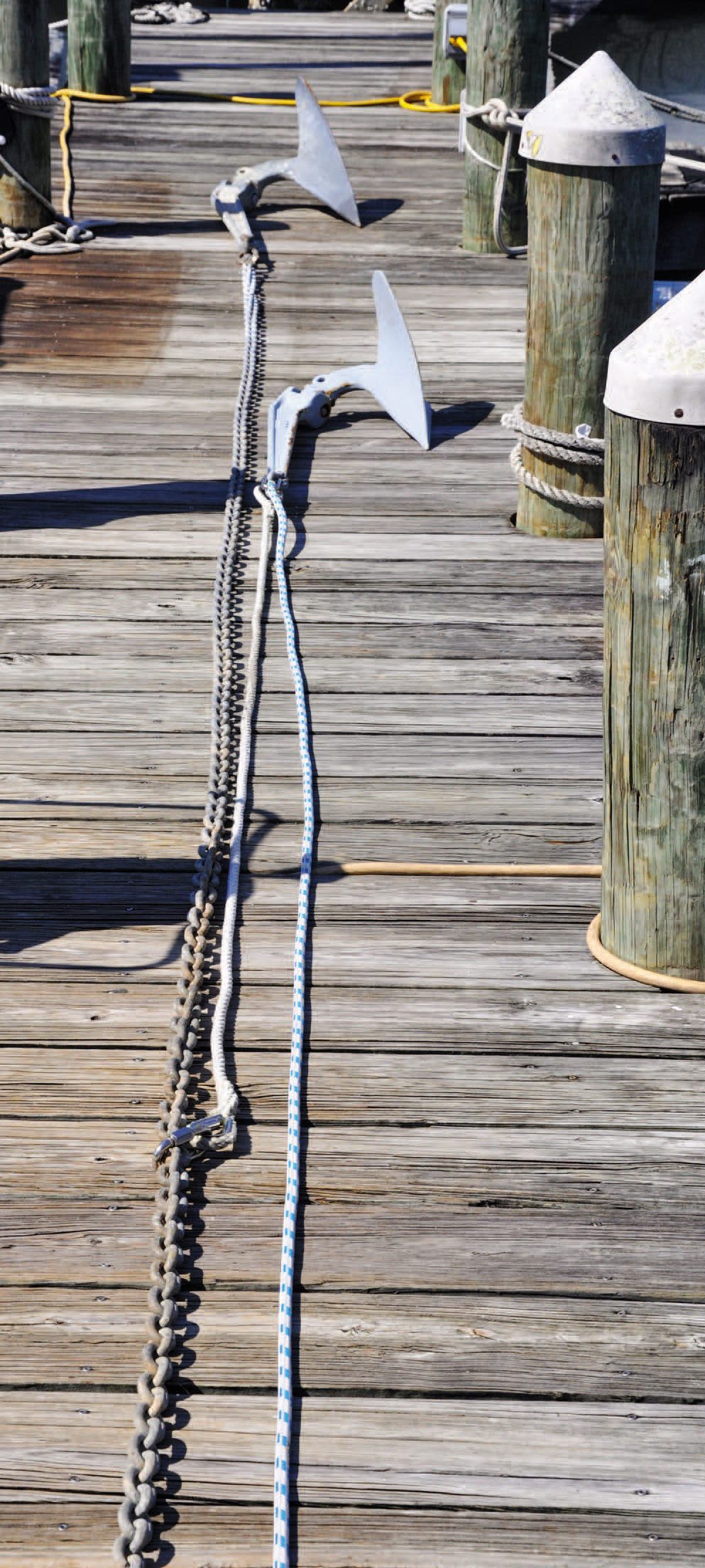

When Roger Hughes first started sailing years ago, it didn’t take him long to realise that it was much better to anchor securely the first time, rather than to be stumbling on deck at 3:00am on a blustery, rainy, pitch-black night, attempting to haul-in and re-set a dragging anchor.
Anchoring is a very important boating skill, since it’s just as important to be able to prevent a boat moving as it is to make it move. Whilst different boats react differently when anchored, there are still some
common tenets that apply to all attempts at anchoring. The main worry is always that the anchor will not dig into the seabed, or else uproot completely for whatever reason, leaving the boat to float away, sometimes with catastrophic and life-threatening results.
An objective is to get the anchor to lie flat along the seabed, where it has the best chance of scooping its way into the bottom. The way to achieve this to lay a good length of rode, about five or six times the anchoring depth (the rode being the total length of chain, or anchor line and chain, from the boat to the anchor). This is the reason for using a heavy chain with a good catenary (catenary being the curve or hang of the rode between the bow of the boat and the seabed).
Plenty of rode by itself doesn’t guarantee an anchor won’t drag but hauling in 200 feet (61m) or so of chain to do it again – especially in the above-mentioned conditions – quickly makes most people want to learn to do it right the first time.

In especially deep anchorages or strong winds, even a long rode can straighten out and lift, with a chance that the anchor will break free and drag. An age-old method to minimise this is to weight the chain about halfway along its length with what is generically called a kellet.
The kellet is a heavy weight, usually with a pulley attached so it can be slid down the anchor line and chain, helps to keep the whole rode flat on the seabed. Unfortunately, such a device offers no actual grip, so even when it touches the seabed it will not embed itself. A kellet, being heavy, unwieldy and often very dirty, is also devilishly difficult to store on a small boat. However, using a second anchor instead of a kellet would help the main anchor to hold, especially if it could be persuaded to dig itself into the bottom as well. But how to achieve this ideal state…?
Through much trial and error, I devised a simple method of using my second bow anchor in conjunction with the main anchor, which has proven to be drag-free, even in the most severe conditions.
Before explaining the method, I would say that I firmly believe any main bower anchor should be as heavy as the anchorman, or woman, can reasonably handle, irrespective of the boat size – within reason of course. Having said that, it is possible that some of the many, many different shaped anchors that have appeared in recent years may not need to be as heavy as the old styles. But for me, heavier will always be better.


An all-chain rode is likewise better than a chain and line combination, if only because of the extra weight. Most boats drag their anchors due to wind, and my schooner Britannia has above-average windage, with two masts, three rollerfurled sails, and a square sail yard, along with a large cockpit bimini. She also weighs 23 tons and when that lot gets moving, it takes some stopping.
Britannia has two CQR anchors on rollers, one on either side of the bowsprit. The main bower weighs 60 pounds (27kg) and the other anchor 35 pounds (16kg). I actually wish I had two 60-pounders, this being the heaviest I can handle safely.
The 60-pounder is attached to 250 feet (76m) of 3/8” (9.5mm) chain, with a further 200 feet (61m) of 5/8” (16mm) line for deep anchorages. The ‘little anchor’ is used in conjunction with the main bower and the idea is to shackle it to the rode in such a way that it not only works like a kellet as a weight, but also digs into the seabed.
I use a strong rope bridle, made of 16mm diameter nylon line, with stainless thimbles spliced and whipped on each end. One end is permanently shackled to the stock of the 16kg CQR, then passes around the underside of the bowsprit and bobstay, and up the roller of the main anchor on the other side of the bowsprit. On my boat the bridle is 2.13m long, but the length will vary with different bow configurations. Boats without a ‘sprit and with an easy to reach bow roller can use a shorter bridle.
Having set up this simple arrangement, here’s how I anchor – every single time for an overnight stay without exception – irrespective of the weather forecast!

After letting go the main anchor and paying out about two times the depth, I then allow the boat to fall back with the wind, or drive it back with the engine, until it feels like the anchor has begun to hold. I then shackle the rope bridle to the chain, using a galvanized steel oval carabiner quick-link shackle with a screw sleeve that is passed through a chain link and secured by the screw. (Steel carabiner shackles of this type carry greater loads than stainless varieties). The other end of the bridle remains attached to the shank of the smaller anchor. I then shackle a length of strong line to the shank of the second anchor, which needs to be at least as long as the length of extra chain I finally intend to pay out.
The second anchor is then released from its bowsprit roller, where it hangs by the bridle on the chain. I then let out more chain and allow the boat to fall back further. This is usually about two or three times the depth. When the second anchor touches bottom, which can be felt with the line attached to it, a hefty burst on the engine drags both anchors backwards and hopefully beds them both in.
I now have my main anchor well dug-in at the head of a good length of chain, with the second anchor attached to it by the bridle, now also bedded in, then another length of chain up to the boat. This gives Britannia a total anchor weight of 95lbs (43kg), complimented by a load of heavy chain. Is there any wonder we never drag?

All this might sound a bit of a rigmarole to deploy, but it’s really very easy when organised properly beforehand. I can anchor using this method almost as quickly as any boat using a single anchor – but with much more peace of mind if the wind pipes up. This anchoring method can be adapted to any boat using two anchors – and who does not have two anchors on their boat?
There are other benefits in making the effort: If for any reason, whether wind or tide, the pull on the boat becomes strong enough, (always at around 3am, of course), the rode will straighten until the bridle becomes tight and tries to lift the second anchor. If this was well bedded in it will resist the chain trying to lift it off the bottom, dampening the effect of whatever is causing the rode to tighten, whilst also ensuring the chain leading to the main anchor remains flat on the bottom (Fig 1).
If the wind shifts or the tide turns, the boat might initially swing to the second anchor (Fig 2). If the wind or current is so strong that it dislodges the second anchor and drags it and the chain around, it will invariably dig in again. If it continues to slip, the whole rode will eventually straighten out in the new direction and the boat will lie to the first anchor, and most likely also the second. This has never happened in its entirety, but I have found the boat in the morning lying to the second smaller anchor, yet with the confidence of knowing there is also a load of chain out there somewhere, with another whopping great anchor on the end.

If you normally anchor with chain and rope, you could simply shackle the bridle of the second anchor to the chain, to achieve almost the same degree of security.
Weighing anchor(s) with or without a windlass, is only slightly more work than a single anchor on chain. The rode is hauled in like normal, along with the rope on the second anchor until it appears on its bridle. At this point it can be hauled over its bow roller (or simply lifted on deck if no second roller is used), using the line attached to its stock. The bridle can then be unshackled from the chain and the end secured to where it normally sits. At this point, the boat remains securely anchored by the first anchor, and I usually take a breather. The main anchor is then brought up in a normal way, and off we go.
For me, the main point of doing all this is because the system has never dragged on Britannia, or any other boat on which I have ever employed it. I wonder how many people can say that about their anchoring successes.
There are other benefits as well.
In rough conditions, it is comforting to know you are lying to two anchors with a sturdy rope attached to the second anchor, as a backup. Who has not worried, just a little, on a wild night, if the chain or line will hold or a single anchor will let go? It is also much easier and quicker to use my method instead of laying two separate anchors, say at 45.There is no manoeuvring to be done, like when trying to lay anchors in different positions, and no chance of their rode’s tangling if the boat swings.

For an epilogue, I will recount this true story:
We were once anchored by my method in Cala Portinatx, a beautiful rocky cove in northern Ibiza, in the Mediterranean Balearic Islands. A Mistral had been forecast from the north, but it arrived in the night much stronger than predicted, and the cove was soon awash with boats dragging their anchors and heading for the rocky shore, accompanied by the usual associated mayhem. But not us. My only concern was keeping watch in case other boats crashed into us.
One small craft drifted close, the exhausted occupants unable to re-set their tiny anchor or even motor against the wind. I heaved them a line and attached it to our aft cleats as they drifted astern. Then a second boat scudded by and I passed them a line as well. All three of us remained like this during a very blustery night, during which a substantial motor cruiser was driven hard up a sandy beach by its frantic occupants – an effective way to stop their boat, at least. Two boats were completely wrecked on rocks, and one person lost his life.
It is certainly worth anchoring well, even in a flat calm with a good forecast, because old Neptune is known to frequently change his mind. BNZ




